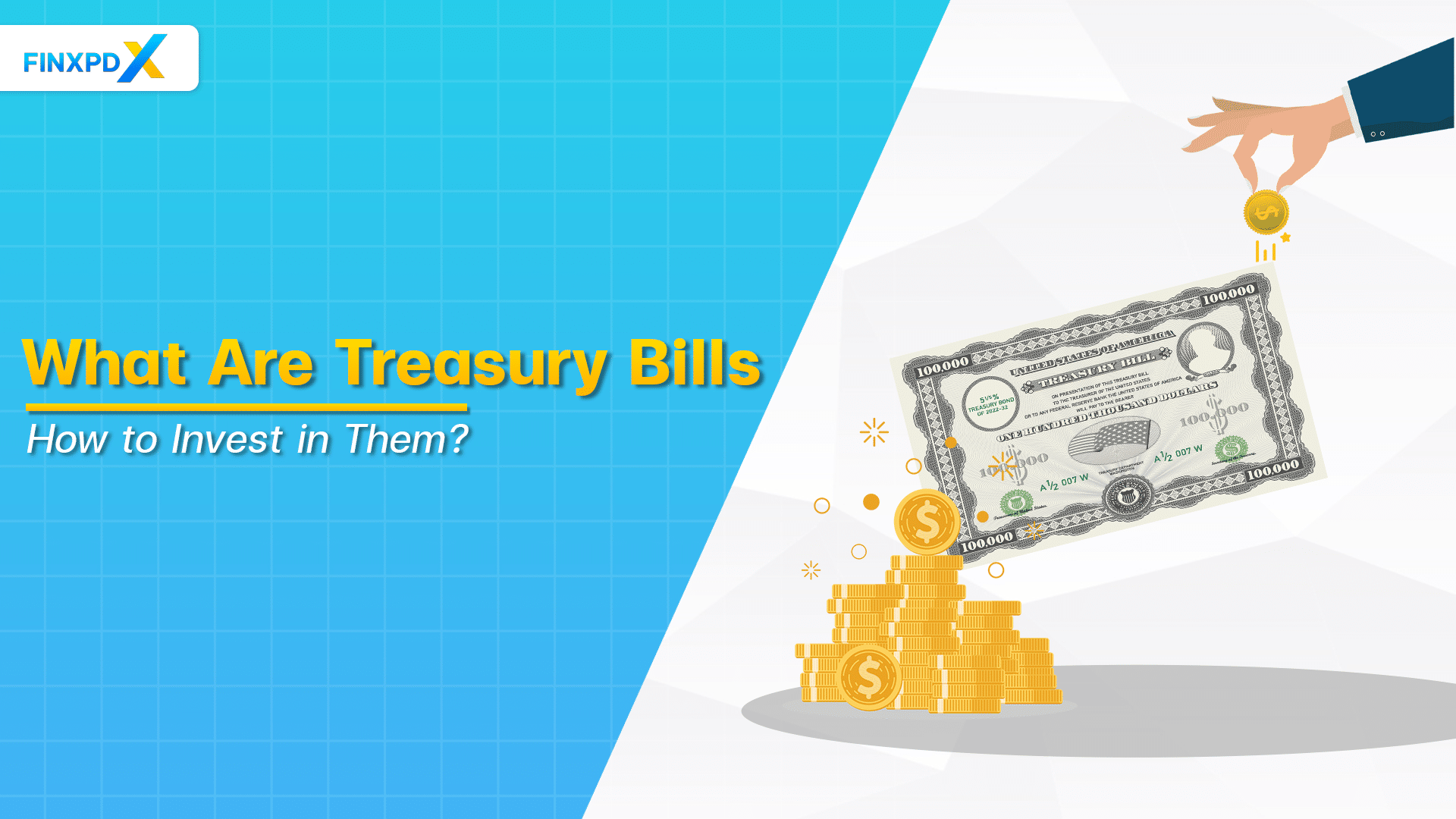In a financial landscape filled with various investment options, finding a secure and reliable one can be challenging. Treasury bills, often abbreviated as T-Bills, stand out as a noteworthy solution. They are short term securities issued by the government, offering a low-risk investment avenue.
This guide aims to provide a comprehensive overview of Treasury bills, highlighting their key features, different types, and the rates of interest they offer.
What Are Treasury Bills?
Treasury Bills, commonly referred to as T-bills, are short term debt securities issued by a national government. They are essentially a form of borrowing, where you lend money to the government for a fixed period, generally ranging from a few weeks to a year.
Unlike bonds or shares, T-Bills don’t pay interest upfront. The discount on T-Bills implicitly factors in the rate of interest. When the bill matures, the investor receives the full face value, and the difference between the purchase price and the face value serves as the interest earned.
Key Takeaways
- Treasury bills are government issued, short-term debt instruments with a maturity of less than one year.
- Treasury bills are considered a low risk investment option suitable for both new and experienced investors.
- The rate of return on Treasury bills is influenced by market conditions, including interest rate trends.
- Treasury bills are available in various maturities, commonly including 28-day, 91-day, 182-day, and 364-day options.
Features of Treasury Bills
In this section, we’ll explain the unique features of Treasury bills that set them apart from other financial instruments, focusing on the aspects that make them an appealing investment choice.
1. Short-Term Investment
T-Bills offer a short-term investment avenue, typically maturing in one year or less, making them suitable for those seeking quick returns.
2. Government-Backed
T-Bills offer government backing, ensuring a high degree of safety and reliability, which minimizes investment risk.
3. Zero Coupon
T-bills are a unique financial instrument that offers a of interest realized upon maturity rather than periodic payments. Issuers release these at a discount to their face value, and they implicitly calculate the interest into this discount.
4. High Liquidity
T-bills offer high liquidity, meaning easy conversion into cash without losing value, making them an ideal choice for emergency funds.
5. Competitive Returns
T-bills offer returns. While these returns might not be as high as volatile investments, they usually outperform regular savings accounts.
6. Tax Advantages
T-bills offer certain tax benefits, with the interest earned often exempt from state and local taxes in some jurisdictions.
7. Diverse Denominations
T-bills offer diverse denominations, accommodating investors of various financial capacities.
8. Ease of Purchase
T-bills offer easy access for purchase through multiple channels, such as banks and online trading platforms.
Types of Treasury Bills
In this section, we will explore the diverse types of Treasury bills that serve a unique purpose and offer distinct advantages and disadvantages. Understanding these variations is crucial for making informed investment decisions.
1. Regular Treasury Bills
The Treasury commonly issues regular Treasury bills, which generally mature in 91, 182, or 364 days. The Treasury auctions them on a discount basis and they do not offer coupon interest.
2. Cash Management Bills
Financial authorities design cash management bills as short term instruments to meet immediate financial needs. They stand apart from regular Treasury bills with irregular issue dates and varying maturities.
3. Foreign Currency Treasury Bills
The Treasury denominates foreign currency Treasury bills in foreign currencies, primarily aiming to attract foreign investors. They offer the added advantage of hedging against currency risk.
4. Zero-Coupon Treasury Bills
Zero-coupon T-Bills function similarly to regular T-Bills but don’t pay any interest. They are available at a deep discount to face value, with interest realized at maturity.
5. State and Local Government Series
The Treasury issues State and Local Government Series bills, also known as SLGS, as specialized types of T-Bills. They are issued to benefit state and local governments, assisting them in complying with federal tax regulations.
6. STRIPS (Separate Trading of Registered Interest and Principal Securities)
In STRIPS, a form of T-Bills, the issuer separates the principal and interest components. Investors can then trade these separated components individually.
5 Advantages of Investing in Treasury Bills
Whether you’re a seasoned investor or new to the financial markets, understanding these advantages can significantly impact your investment strategy.
1. Security Assurance
Government backing ensures Treasury bills are one of the safest investment options. The risk of default is nearly nonexistent.
2. High Liquidity
Investors can readily convert T-Bills back into cash when needed, ensuring minimal loss in value, particularly in light of the prevailing T-Bills interest rate.
3. Predictability of Returns
The zero coupon nature of these bonds allows investors to know the return on investment from the start, providing a stable income stream.
4. Tax Benefits
Certain jurisdictions grant tax advantages on the earnings, amplifying the financial attractiveness of T-Bills.
5. Ease in Purchasing
Availability through various platforms, such as banks and online trading websites, simplifies the investment process.
How to Buy Treasury Bills: Step-By-Step
This part aims to provide an easy guide for potential investors, detailing the steps required to buy Treasury bills. Whether you’re new or an experienced investor, this section will serve as a useful manual.
1. Conduct Research and Select a Platform
It begins by educating yourself on the key features, advantages, and types of T-Bills available. Once you’ve gained sufficient knowledge, select a reliable trading platform or a financial institution that offers T-Bills. This could be a government website, a bank, or an online brokerage.
2. Create and Verify an Account
The next step involves creating an account on your chosen platform. You will usually need to complete a verification process, which includes submitting identification documents and proof of address. Make sure you have all the necessary documents ready to expedite the process.
3. Review Available Options
After completing an account verification, browse through the platform’s offerings to understand the different T-Bills available. Focus on factors like maturity dates, interest rates, and the minimum required investment. This will guide you in choosing a T-Bills that meets your financial goals.
4. Place and Confirm Your Order
After you’ve chosen suitable Treasury bills, you’ll need to place an order. This typically involves specifying the quantity and maturity dates. Once you’ve filled out the required fields, review and confirm your purchase order to proceed.
5. Execute Payment
The next step is to complete the payment for your Treasury bills. Platforms often provide multiple payment options, including wire transfers, checks, or through a pre funded brokerage account. Select the most convenient method for you and execute the payment.
6. Receive Confirmation and Track Investment
Upon successful payment, you’ll receive a confirmation through an email or in-platform notification. Many platforms offer tracking tools that let you monitor your investment, ensuring you’re always informed about the performance of your Treasury bills.
5 Tips for Investing in Treasury Bills
Investing in Treasury bills requires more than just a cursory understanding of the financial market. The following tips will arm you with valuable insights to optimize your investment strategy.
1. Assess Your Financial Goals
Begin by clearly defining your financial objectives. Knowing your financial goals will guide your investment choices.
2. Understand Market Conditions
Monitor economic indicators and interest rate trends to understand market conditions. These variables impact the rate of return on Treasury bills, making for a more informed investment.
3. Start Small
Consider starting with a smaller amount if you’re new to this market. A smaller initial investment helps you learn the ropes without significant risk.
4. Diversify Maturity Dates
Search for Treasury bills with various maturity dates. A spread of maturity dates ensures a regular inflow of returns and offers more flexibility.
5. Consult a Financial Advisor
Seek advice from a qualified financial advisor for complex financial decisions. Personalized guidance can make a significant difference in your investment strategy.
Conclusion
Treasury bills are a low risk investment option well suited for both new and seasoned investors. Like all financial ventures, they come with nuances. Understanding the types of Treasury bills and the features of Treasury bills is as essential as assessing market conditions and diversifying your portfolio to make informed decisions.
If you’re new to this investment avenue, consider starting small. Seeking professional advice offers additional safeguards. Whether your financial objectives are, Treasury bills can be a secure and versatile addition to your portfolio. However, the right strategy is essential for optimal results.
FAQs
Treasury bills are short-term debt instruments issued by the government. They come with a maturity of less than one year and offer a secure, low risk investment option.
You can buy T-bills either directly from the government through auctions or from secondary markets. Financial institutions and brokers also offer these instruments for purchase.
T-bills come in different maturities usually 28 days, 91 days, 182 days, or 364 days. Each type offers varying rates of return, suitable for different investment horizons.
The minimum investment amount for T-bills varies depending on the issuer and type. However, it’s generally accessible and can be as low as a few hundred dollars.
Unlike fixed deposits, T-bills are more liquid and generally offer a lower rate of return. They are government backed, making them more secure compared to fixed deposits, which are bank issued.
Related Articles:
- Is Commercial Paper the Right Choice for Quick Investments?
- What Is ETF?: A Guide to Pros, Cons, and How to Invest
Read more: Funds & Loans








